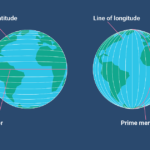The poles are cold and the tropics are warm because of the way the Earth’s orbit around the sun and the tilt of the Earth’s axis affects the amount of sunlight different parts of the Earth receive.
The Earth orbits, or travels around, the sun in a path that is shaped like an oval. As the Earth orbits the sun, different parts of the Earth are exposed to different amounts of sunlight. When the Earth is tilted towards the sun, the sun’s light shines directly on the Earth and it is warm. When the Earth is tilted away from the sun, the sun’s light is not as direct and it is cooler.
The Earth’s axis is an imaginary line that runs through the North Pole and South Pole. The Earth’s axis is tilted at an angle of about 23.5 degrees. This tilt is what causes the seasons.
During the summer in the Northern Hemisphere, the Northern Hemisphere is tilted towards the sun and it gets more direct sunlight. This is why the weather is warmer in the summer. During the winter, the Northern Hemisphere is tilted away from the sun and it gets less direct sunlight. This is why the weather is cooler in the winter.
The tropics are the regions of the Earth near the equator. The equator is an imaginary line around the middle of the Earth that is equidistant from the North Pole and South Pole. The tropics are warm because they receive direct sunlight all year round. The poles, on the other hand, are cold because they receive less direct sunlight, especially during the winter.
Understanding how the Earth’s orbit and tilt affect the amount of sunlight different parts of the Earth receive can help us learn more about the Earth and how it moves in space. It can also help us understand why the weather is different in different parts of the world.






